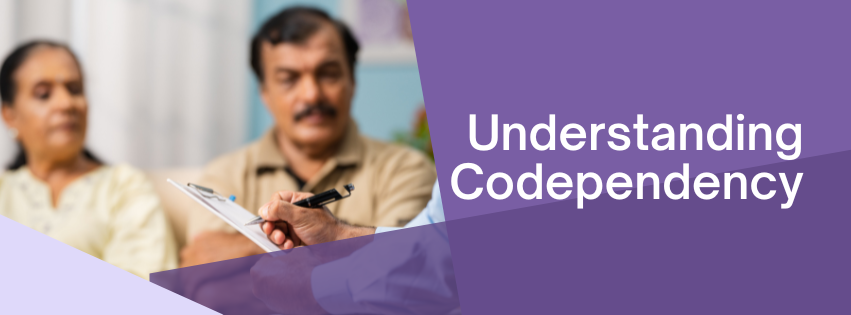Codependency is a dysfunctional relational pattern in which an individual prioritizes another person’s needs over their own, often to the detriment of their well‐being (Cermak, 1986). Originally identified in the context of familial alcoholism, codependent behaviors can emerge in any close relationship characterized by imbalance, enabling, and emotional suppression (Beattie, 1987).
Signs and Symptoms of Codependency
- Excessive People-Pleasing
Constantly seeking approval and fearing rejection (Black, 2007). - Poor Boundaries
Difficulty saying “no,” leading to overcommitment and burnout (Cermak, 1986). - Caretaking and Rescue Behaviors
Feeling responsible for others’ feelings or actions, even when harmful (Beattie, 1987). - Low Self-Esteem
Deriving self‐worth from being needed, rather than from personal strengths or achievements (Black, 2007). - Emotional Reactivity
Feeling anxious or helpless when others experience distress, yet suppressing one’s own emotions (Cermak, 1986).
Pathways to Recovery from Codependency
- Psychoeducation
Learning about codependency helps individuals recognize unhealthy patterns and normalize their experiences (National Alliance on Mental Illness, 2024). - Individual Therapy
- Cognitive Behavioral Therapy (CBT) to challenge negative beliefs (“I’m only valuable if I help others”) and develop assertiveness skills (Beattie, 1987).
- Schema Therapy to address deep‐rooted patterns of self‐sacrifice and dependency (Young, Klosko, & Weishaar, 2003).
- Family-Focused Interventions
- Family Systems Therapy to improve communication, set healthy boundaries, and redistribute roles within the family unit (Walsh, 2016).
- Psychoeducational Workshops for relatives to learn about codependency and support change processes (Black, 2007).
- Support Groups
Groups like Codependents Anonymous (CoDA) provide peer‐led meetings for shared experience and mutual encouragement (Codependents Anonymous, n.d.).
Supporting Clients and Families
- Education and Collaboration
Encourage open discussions about codependent behaviors. Use “I” statements (e.g., “I feel overwhelmed when…”) to reduce blame and foster mutual understanding. - Boundary Setting
Work together to identify and respect personal limits—establish clear agreements about helping behaviors and self-care time. - Self-Care Planning
Help clients design routines that include personal hobbies, rest, and social support outside of caregiving roles. - Ongoing Check-Ins
Regularly review progress in therapy and support groups, adjusting goals as clients gain confidence in asserting their needs.
Resources for Support
- Codependents Anonymous (CoDA)
Peer-led support groups: https://coda.org/ - National Alliance on Mental Illness (NAMI)
Educational materials and local family support:
National Alliance on Mental Illness. (2024). Codependency. https://www.nami.org/About-Mental-Illness/Common-with-Mental-Illness/Related-Conditions/Codependency - Al-Anon Family Groups
Support for families and friends of people with substance use issues: https://al-anon.org/ - Mississippi Department of Mental Health
Directory of statewide mental health services:
Mississippi Department of Mental Health. (n.d.). Find services. https://www.dmh.ms.gov/ - Barksdale Missions, LLC
Individual, family, and group therapy services:
https://www.barksdalemissions.com/
References
Beattie, M. (1987). Codependent no more: How to stop controlling others and start caring for yourself. Hazelden.
Black, D. W. (2007). Codependency: A review of the literature. American Journal of Psychiatry, 164(8), 1333–1339. https://doi.org/10.1176/ajp.2007.164.8.1333
Cermak, T. L. (1986). Diagnosing and treating codependence: A guide for professionals who work with chemical dependents, their spouses, and children. Johnson Institute.
Codependents Anonymous. (n.d.). About CoDA. https://coda.org/
Mississippi Department of Mental Health. (n.d.). Find services. https://www.dmh.ms.gov/
National Alliance on Mental Illness. (2024). Codependency. https://www.nami.org/About-Mental-Illness/Common-with-Mental-Illness/Related-Conditions/Codependency
Walsh, F. (2016). Strengthening family resilience (3rd ed.). Guilford Press.
Young, J. E., Klosko, J. S., & Weishaar, M. E. (2003). Schema therapy: A practitioner’s guide. Guilford Press.
